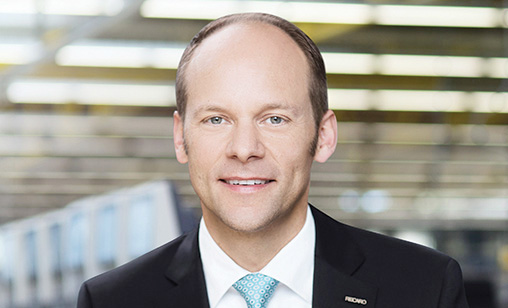Cabin Interiors
China seat output jumps as region’s airlines expand
Thousands of new jets scheduled for delivery to airlines in the next two decades mean there will be no pause in the market for aircraft seats. Recaro CEO, Dr Mark Hiller, told chief correspondent, Tom Ballantyne, the seat manufacturer is expanding its production plants in China and worldwide to meet accelerating orders for the German company’s cabin products.
July 1st 2018
With annual sales of $573 million, a bulging order book and factories rolling out 120,000 aircraft seats a year, Recaro Aircraft Seating CEO and shareholder, Dr. Mark Hiller, told Orient Aviation last month that growing demand for the company’s seats requires output increases in all of it plants worldwide including China. Read More »
“We are expanding at all of our sites in China, the U.S., Poland and Germany. We will be adjusting our growth rate upwards. Our order books are looking good to 2020 and beyond,” he said.
 |
Seat output expansion at Recaro’s Qingdao plant in the Mainland’s Shandong Province will be completed in stages. “We are in phase one, are starting phase two and acquiring land for phase three. In 2017, we delivered 20,000 seats out of China, the year before 10,000 and the year before that 5,000. We have more or less doubled output for two consecutive years,” he said.
“From there we will grow by an average of 10% a year and will bring more sales and customer service facilities into the region. We have teams based in Singapore, Hong Kong and China to better support our customers.
“We are the market leader in economy class and have a very young portfolio in the short, medium and long range economy sector. It covers low-cost carriers like Cebu which needs a very light but robust seat. We also are on the Qantas B787 that operates the 17-hour London-Perth flight.”
Hiller said seating is more important for airlines that operate ultra-long-haul routes. “We see ourselves well positioned for such ultra-long range products because of our strength in comfort, ergonomics and lightweight design. These factors are very important for ultra-long range flights. For long-haul flights, passengers need to be as comfortable as possible, seats need to be efficient in limited space and as light as can be achieved to support ultra-long range flights.”
 |
Recaro is working on seat designs that better support sleeping in economy class. “We have six-way headrests on the market that hold your head very well in economy class. They provide a perfect position to rest and sleep during long haul flights,” he said.
In January, Boeing announced it would form a joint venture with leading automotive seat-maker, Adient, to develop, manufacture and sell a portfolio of seating products to airlines and aircraft lessors.
In response, Hiller said: “We are used to that. New entrants are always coming in. Every year at the aircraft interior show [in Hamburg] maybe five or six suppliers announce they are entering the business. Also every year you hear a couple of them have left.
“There are new entrants for sure because it is a closed market and there is opportunity to enter it, but to sustain a long-term, viable business model is not so easy. When I joined the industry many years ago there were more or less three main suppliers with a combined market share of 80%.
“Nowadays, there also are three main suppliers with a market share of 80%, which means that overall, distribution has not changed that much. The remaining 20% is much bigger in absolute numbers and in this area there are more suppliers. It is a growth market and there are options for sure to enter it.”
 |
One crucial factor for all players in the supply chain is production problems with engines ordered for Airbus and Boeing aircraft. Hiller said: “We have a very good track record over the last ten years with a perfect delivery history and very good quality [seats}.
“We have set a benchmark of nearly 100% on-time delivery in the industry. We have the best ratings from our OEMs, Airbus and Boeing. We are very careful about these relationships. Whatever we commit we are able to deliver it.”
Putting seats on new aircraft is not the only growth sector of the business. Hiller said there is demand for retrofits of cabins. “We are expecting even higher demand in retrofit business out of Asia and especially the Chinese market,” he said.
“The fleets are still young, but they are aging. There is the opportunity to improve the passenger experience and the efficiency of the plane by running retrofit programs. We are increasing capacity to support that trend. We have grown in the past 10 years by 10% every 12 months and plan to increase that target up to 15% annually”.